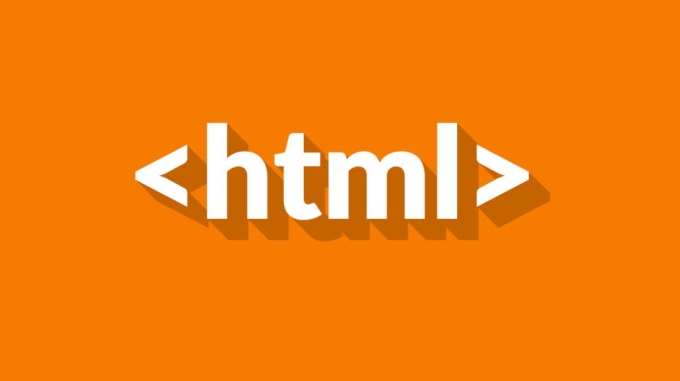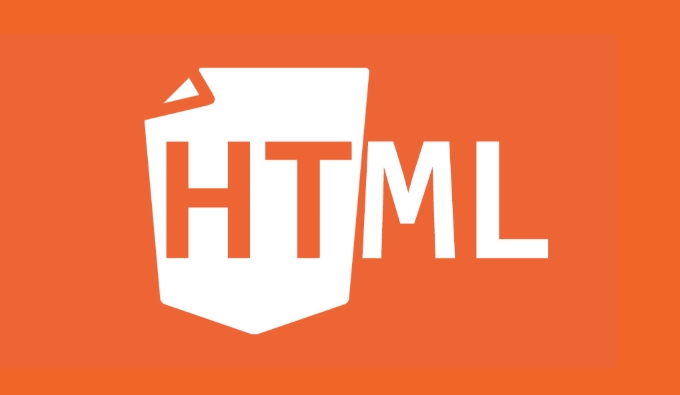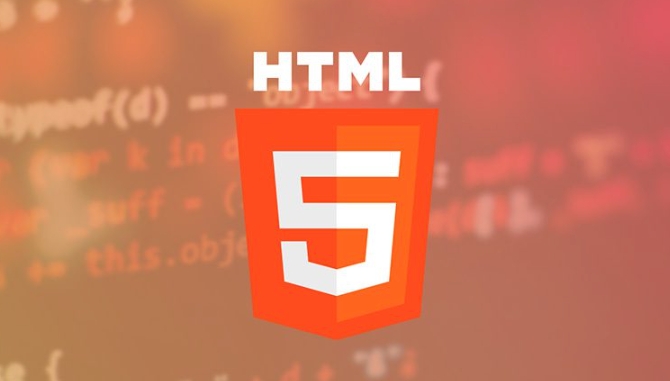 Web Front-end
Web Front-end
 HTML Tutorial
HTML Tutorial
 Configuring the Viewport for Responsive Design with the HTML meta Tag
Configuring the Viewport for Responsive Design with the HTML meta Tag
Configuring the Viewport for Responsive Design with the HTML meta Tag
Jul 04, 2025 am 01:22 AMThe key to mobile adaptation is to correctly configure the viewport. 1. The viewport meta tag is used to control the layout and scaling of web pages on mobile devices. The basic writing method is <meta name="viewport" content="width=device-width, initial-scale=1">, indicating that the page width is equal to the device width and does not scale at the beginning; 2. The reason why viewport must be set is to avoid problems such as automatic shrinkage, responsive layout failure, and poor user experience; 3. Use viewport correctly to add additional parameters such as maximum-scale=1 and user-scalable=no to limit scaling, but it is important to note that it may affect the user experience. A common practice is to only retain the basic settings to ensure the normal layout and keep the user's operation free.

One of the keys to mobile adaptation is to correctly configure the viewport. Many people may ignore this detail when they first start responsive design, and the page appears small on their phones or scales abnormally. In fact, the root cause of the problem is often the wrong setting of the viewport.

What is the viewport meta tag?
viewport is an area used by the browser to control how web pages are laid out and scaled on mobile devices. By default, many mobile browsers will render the page into a "virtual viewport" wider than the screen, and then shrink the overall size to adapt to the screen, which will lead to smaller text and difficult buttons.

The solution is to add this line of code to the HTML :
<meta name="viewport" content="width=device-width, initial-scale=1">
The meaning of this sentence is: make the width of the page equal to the screen width of the device, and the initial scaling ratio is 1, that is, no scaling.

Why do you have to set a viewport?
The page can perform badly on your phone without setting the viewport:
- The page is reduced, and the user needs to zoom in manually
- Responsive layout failed and media query cannot work properly
- Poor user experience, especially difficult to click on small elements
For example, you wrote a responsive website and tested it on the desktop browser, but it was deformed as soon as you got it on your phone. It is very likely that the browser does not know that you are going to do responsive design because the viewport is not set correctly.
How to use the viewport tag correctly?
Although the basic writing method is simple, some extra parameters can be added to enhance control in actual development:
<meta name="viewport" content="width=device-width, initial-scale=1, maximum-scale=1, user-scalable=no">
Here are several parameters:
-
width=device-width: Make the page width equal to the device width -
initial-scale=1: The initial scaling is 1 -
maximum-scale=1: maximum scaling is 1 -
user-scalable=no: prohibits user from scaling manually
However, be aware that some settings may affect the user experience, such as banning zooming completely. If your content is too small and users want to see clearly but cannot enlarge it, they will be disgusted. Therefore, when using these options, you must judge based on the specific scenario.
A common practice is to keep the default scaling behavior and only ensure that the viewport is correct:
<meta name="viewport" content="width=device-width, initial-scale=1">
This not only ensures that the responsive layout takes effect, but also does not restrict user operation freedom.
Basically that's it. The viewport setting seems simple, but it is the most basic and error-prone link in mobile development. Don't underestimate this line of code, it determines whether your responsive design can truly "responsive".
The above is the detailed content of Configuring the Viewport for Responsive Design with the HTML meta Tag. For more information, please follow other related articles on the PHP Chinese website!

Hot AI Tools

Undress AI Tool
Undress images for free

Undresser.AI Undress
AI-powered app for creating realistic nude photos

AI Clothes Remover
Online AI tool for removing clothes from photos.

Clothoff.io
AI clothes remover

Video Face Swap
Swap faces in any video effortlessly with our completely free AI face swap tool!

Hot Article

Hot Tools

Notepad++7.3.1
Easy-to-use and free code editor

SublimeText3 Chinese version
Chinese version, very easy to use

Zend Studio 13.0.1
Powerful PHP integrated development environment

Dreamweaver CS6
Visual web development tools

SublimeText3 Mac version
God-level code editing software (SublimeText3)

Hot Topics
 How to implement flexible layout and responsive design through vue and Element-plus
Jul 18, 2023 am 11:09 AM
How to implement flexible layout and responsive design through vue and Element-plus
Jul 18, 2023 am 11:09 AM
How to implement flexible layout and responsive design through vue and Element-plus. In modern web development, flexible layout and responsive design have become a trend. Flexible layout allows page elements to automatically adjust their size and position according to different screen sizes, while responsive design ensures that the page displays well on different devices and provides a good user experience. This article will introduce how to implement flexible layout and responsive design through vue and Element-plus. To begin our work, we
 React responsive design guide: How to achieve adaptive front-end layout effects
Sep 26, 2023 am 11:34 AM
React responsive design guide: How to achieve adaptive front-end layout effects
Sep 26, 2023 am 11:34 AM
React Responsive Design Guide: How to Achieve Adaptive Front-end Layout Effects With the popularity of mobile devices and the increasing user demand for multi-screen experiences, responsive design has become one of the important considerations in modern front-end development. React, as one of the most popular front-end frameworks at present, provides a wealth of tools and components to help developers achieve adaptive layout effects. This article will share some guidelines and tips on implementing responsive design using React, and provide specific code examples for reference. Fle using React
 How to use CSS Flex layout to implement responsive design
Sep 26, 2023 am 08:07 AM
How to use CSS Flex layout to implement responsive design
Sep 26, 2023 am 08:07 AM
How to use CSSFlex elastic layout to implement responsive design. In today's era of widespread mobile devices, responsive design has become an important task in front-end development. Among them, using CSSFlex elastic layout has become one of the popular choices for implementing responsive design. CSSFlex elastic layout has strong scalability and adaptability, and can quickly implement screen layouts of different sizes. This article will introduce how to use CSSFlex elastic layout to implement responsive design, and give specific code examples.
 How to implement responsive layout using Vue
Nov 07, 2023 am 11:06 AM
How to implement responsive layout using Vue
Nov 07, 2023 am 11:06 AM
Vue is a very excellent front-end development framework. It adopts the MVVM mode and achieves a very good responsive layout through two-way binding of data. In our front-end development, responsive layout is a very important part, because it allows our pages to display the best effects for different devices, thereby improving user experience. In this article, we will introduce how to use Vue to implement responsive layout and provide specific code examples. 1. Use Bootstrap to implement responsive layout. Bootstrap is a
 How to use Layui to develop a responsive web layout design
Oct 25, 2023 pm 12:24 PM
How to use Layui to develop a responsive web layout design
Oct 25, 2023 pm 12:24 PM
How to use Layui to develop a responsive web page layout design. In today's Internet era, more and more websites need to have good layout design to provide a better user experience. As a simple, easy-to-use, and flexible front-end framework, Layui can help developers quickly build beautiful and responsive web pages. This article will introduce how to use Layui to develop a simple responsive web layout design, and attach detailed code examples. Introducing Layui First, introduce Layui related files in the HTML file
 How to use PHP to implement mobile adaptation and responsive design
Sep 05, 2023 pm 01:04 PM
How to use PHP to implement mobile adaptation and responsive design
Sep 05, 2023 pm 01:04 PM
How to use PHP to implement mobile adaptation and responsive design Mobile adaptation and responsive design are important practices in modern website development. They can ensure good display effects of the website on different devices. In this article, we will introduce how to use PHP to implement mobile adaptation and responsive design, with code examples. 1. Understand the concepts of mobile adaptation and responsive design Mobile adaptation refers to providing different styles and layouts for different devices based on the different characteristics and sizes of the device. Responsive design refers to the use of
 CSS Viewport: How to use vh, vw, vmin, and vmax units for responsive design
Sep 13, 2023 pm 12:15 PM
CSS Viewport: How to use vh, vw, vmin, and vmax units for responsive design
Sep 13, 2023 pm 12:15 PM
CSSViewport: How to use vh, vw, vmin and vmax units to implement responsive design, specific code examples required In modern responsive web design, we usually want web pages to adapt to different screen sizes and devices to provide a good user experience. The CSSViewport unit (viewport unit) is one of the important tools to help us achieve this goal. In this article, we’ll cover how to use vh, vw, vmin, and vmax units to achieve responsive design.
 Use PHP and AngularJS to build a responsive website to provide a high-quality user experience
Jun 27, 2023 pm 07:37 PM
Use PHP and AngularJS to build a responsive website to provide a high-quality user experience
Jun 27, 2023 pm 07:37 PM
In today's information age, websites have become an important tool for people to obtain information and communicate. A responsive website can adapt to various devices and provide users with a high-quality experience, which has become a hot spot in modern website development. This article will introduce how to use PHP and AngularJS to build a responsive website to provide a high-quality user experience. Introduction to PHP PHP is an open source server-side programming language ideal for web development. PHP has many advantages, such as easy to learn, cross-platform, rich tool library, development efficiency





